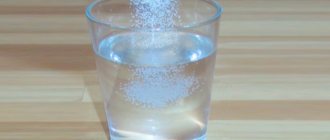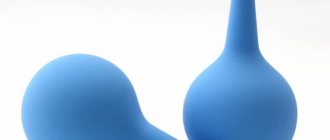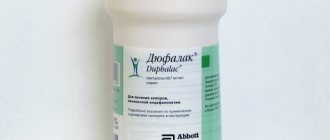Plain water
Enema solutions can be very different. The simplest is ordinary water at different temperatures. It is used to perform a cleansing enema, the purpose of which is to cleanse the colon of feces and gases.
It is usually placed in the following cases:
- patients suffering from constipation, when no bowel movement is observed for 3 days and if other methods do not help;
- before bowel examination;
- before planned surgical treatment or childbirth.
When giving an enema, 1.5-2 liters of plain water are injected into the intestines of an adult. For infants, the procedure is carried out with 0.9% sodium chloride, which can be bought at the pharmacy. It is administered at the rate of 10 ml per month of a child’s life.
If you need to give a regular cleansing enema and the intestines are functioning normally, the water temperature should be in the range from 25⁰C to 35⁰C.
When enema therapy is carried out for intestinal atony or paralysis, the temperature of the liquid should be below 25⁰C, and in case of severe dysfunction of the organ, it should be below 12⁰C.
This procedure activates intestinal motility and lowers the temperature during fever.
In order to normalize body temperature during severe hyperthermia, such an enema is done in a volume of up to 100 ml. But the procedure cannot be performed frequently, as inflammatory processes may develop. The water temperature should be about 15⁰C, 2-3 enemas are given at intervals of 30 minutes, and other physical methods should be used to normalize the patient’s well-being.
Cold and cool water cannot be used for spastic constipation; in this case, on the contrary, warm enemas are indicated, with the temperature of the injected liquid from 35⁰C to 42⁰C. This procedure should not be carried out in case of fecal intoxication, since warm water dissolves fecal debris in the intestines and they will enter the systemic bloodstream through its mucosa, which will worsen the patient’s general well-being.
Important! It is almost impossible to independently distinguish between atonic and spastic constipation, therefore, unless the doctor has prescribed a different temperature of the enema liquid, then it should be 25⁰C-35⁰C.
When is a glycerin enema indicated for constipation?
In some cases of treating constipation, the patient is prescribed an enema with a glycerin-based solution. This cleansing of the intestines not only guarantees the complete exit of feces, but also prevents ruptures of the anus and hemorrhoids.
A glycerin enema for constipation ensures the direct breakdown of accumulated feces and the flushing out of toxins that often accumulate during prolonged bowel retention. It is recommended to carry out this procedure for constipation accompanied by:
- bloating and colic;
- nausea and skin rashes;
- signs of intoxication such as fever and loss of appetite;
- pain in the right hypochondrium.
A glycerin enema is indicated for constipation for more than 4–5 days with a complete absence of bowel movements. It is also used for postpartum and postoperative types of constipation. Often, glycerin is added to the enema solution before surgery.
Despite the effectiveness of this intestinal cleansing, an enema has many contraindications: pregnancy, diabetes, colitis, high body temperature, intestinal tumors, etc. Therefore, you should resort to this type of therapy only after consulting a specialist.
Various compositions of solutions for enema therapy
Herbal enema
An enema using medicinal plants has the following positive effects:
- cleanses the intestines;
- eliminates bloating;
- normalizes stool;
- relieves inflammation in the intestines;
- normalizes pH in the rectum.
As a rule, chamomile is used to prepare it. Sometimes mint, sage or eucalyptus are taken along with it. The enema solution is prepared at the rate of 2 tbsp. medicinal raw materials per 1 liter of water. The herbs can be poured with boiling water, allowed to brew and filtered, or boiled for 5 minutes. Give a herbal enema in the morning after a natural bowel movement. The course is 1 week, after a 3-day break it can be repeated again. An enema with chamomile is recommended for pregnant women and small children, since, unlike ordinary water, it disturbs the intestinal microflora less often, and, therefore, dysbiosis develops less often when used.
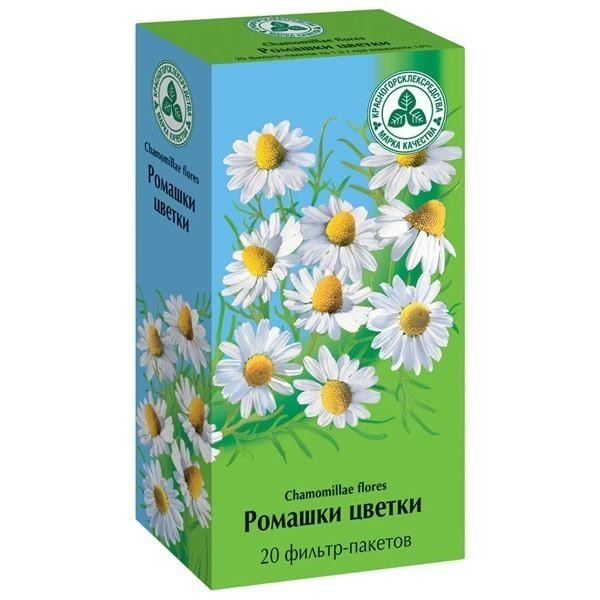
Milk enema
You can prepare a cleansing enema with milk at home yourself. To prepare it, you need 1 liter of milk with 2-3% fat content and heated to a temperature of 30-40⁰C and a combination heating pad or Esmarch mug.
It is recommended to use it in the evening for a maximum of 5 days. Women should avoid this procedure for several days before and after menstrual bleeding.
This enema helps eliminate constipation and excessive gas formation. It is also recommended for dry skin.
Oil enema
An oil enema is recommended for severe constipation. The following oils can be used for the procedure:
To carry out the procedure, you need to take from 80 to 100 ml of oil and heat it to a temperature of 40⁰C and then it is injected into the rectum to a depth of 8-10 cm, it is better to do this using a syringe.
The oil coats the stool and relaxes the intestinal muscles. After administering the enema, you must be in a horizontal position for 15-20 minutes. After the oil enema, another one with chamomile is given. It is recommended to carry out the procedure in the evening before going to bed.
Lemon enema
To prepare the solution, you need to squeeze the juice from 2 lemons and dilute it in 1 liter of water. The temperature of the liquid should be between 30⁰С and 35⁰С. This procedure cannot be carried out very often, otherwise it can shift the intestinal pH to the acidic side.
Garlic enema
An enema solution with garlic is prepared when helminthic infestations, for example, pinworms, are observed. To do this, grind a head of garlic and fill it with water at a temperature of 30⁰С-40⁰С and leave to infuse. After 12 hours, the infusion is filtered. Before a garlic enema, a regular cleansing enema with plain water is given, the purpose of which is to eliminate feces from the intestines. Afterwards, garlic solution is slowly introduced in a volume of 50-80 ml. During the procedure, a burning sensation and tingling sensation will be felt and must be endured. After 5-10 minutes, the solution will pour out, and with it the parasites will be flushed out of the body. The course of therapy is 7 days. After a week's break, it can be repeated again.
Soda solution
To prepare an enema with soda, take 30-40 g of ordinary baking soda per 1 liter of warm water.
By its chemical nature, soda is nothing more than an alkali, so it is injected into the rectum in order to reduce acidity, which, for example, increases with an upset stomach. In addition, this procedure eliminates spasms and relieves pain during bowel movements. For a stronger effect, you can add a little salt.
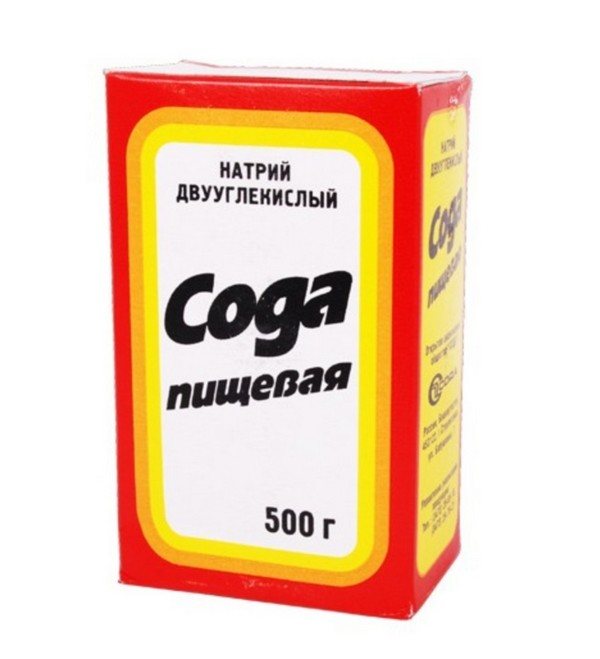
Soapy enema
An enema with a soap solution is used to stimulate intestinal motility during constipation. To prepare it, baby or any neutral soap without any additives is grated. Then take 1 tbsp. and dissolves in 1 liter of water.
Folk recipes
You can prepare microenemas for constipation yourself. For this purpose, food, pharmaceutical preparations, and medicinal plants are used. Let's first talk about options for preparing cleansing microenemas:
- coffee. You need to grind three tablespoons of natural coffee in a coffee grinder. The resulting powder is poured into a glass of distilled water and placed on low heat for five minutes. Then the heat should be increased and the product boiled for ten minutes. Cooled and filtered coffee is ready for use. Such enemas help remove toxins and have a beneficial effect on the functioning of the gallbladder;
- honey Add one spoonful of lemon juice and liquid honey to 20 ml of boiled warm water. All ingredients should be thoroughly mixed to obtain a homogeneous mass;
- starchy You can use potato, rice, corn or wheat starch. Five grams of the product are diluted in 125 ml of distilled water. The liquid is put on fire and boiled. It should be simmered over low heat and gradually add another 125 ml of water.
For chronic constipation, it is recommended to prepare laxative enemas. The basis is oil or saline solution. If constipation is accompanied by the release of dry feces, it is recommended to take a course of two or three softening microenemas. To do this, you need to heat a glass of milk, then add 20 g of butter.
After cooling, warm milk is injected into the rectum. After the procedure, you need to lie down for fifteen minutes. You can enhance the laxative effect by adding a pinch of salt. To stabilize the intestinal microflora, such enemas are best done before bedtime. For cracks and irritations that occur due to constipation, it is useful to do enemas with herbal decoctions.
The following plants can be used as a basis:
After the enema, you should monitor your condition. If there is no burning or itching, the procedure can be repeated again. So, an enema is an effective procedure that helps cleanse the intestines of fecal accumulations. For constipation, cleansing, oil, and hypertonic types of enemas are used. Do not forget about contraindications to this procedure.
For example, it cannot be performed in case of acute inflammatory processes, intestinal neoplasms, hemorrhoids, or elevated temperature. Abuse of cleaning can lead to dysbacteriosis. When using an enema to cleanse a child's intestines, it is important to be extremely careful. Before treatment, be sure to consult your doctor.

is prescribed quite often for constipation In comparison with other laxatives, it is absolutely safe, since it is not absorbed into the intestinal wall and is excreted from the body along with feces. Glycerin-based suppositories can be used for both adults and children. They do not pose a threat during pregnancy and are indicated for many types of constipation.
Solutions
To cleanse the intestines, it is permissible to use different types of solutions. Soapy, soda, salty, with medicinal herbs. All are quite effective and eliminate the symptom quickly.
Herbal enemas cleanse the intestines, eliminate flatulence and bloating, and normalize the level of acidity in the intestines. The soap solution stimulates peristalsis during fecal stagnation. Soda reduces acidity and eliminates pain.
Before the procedure you need to prepare. The site is covered with oilcloth, the syringe or Esmarch tip is sterilized and lubricated with Vaseline. A solution is prepared with which the manipulation will be carried out.
How to prepare the solution
In order to prepare the cleansing composition, you will need a little time and some ingredients.
Herbal solution
Colon cleansing with a decoction or infusion of medicinal herbs is less aggressive and is allowed for a pregnant woman and a small child. Chamomile is often used for preparation. But it is acceptable to add sage or eucalyptus. Therapeutic enemas from herbs have a gentle effect, but effectively remove stagnant feces.
The recipe is simple. You need to take 2 tablespoons of raw material and pour one liter of boiling water. Leave for an hour and strain.
Oil enema
In case of pronounced defecation delays, the option with oil is the most preferable. Manipulation with sunflower or olive oil is recommended in the evening before bed.
Before the procedure, the oil is heated to 40 degrees. Then it is inserted into the rectum using a syringe. It is not recommended to get up for 15 minutes after finishing the procedure.
It's easy to prepare the composition. You need to take 30 grams of soda and dilute it in a liter of water. For better cleansing, you can mix soda with salt and dissolve it in water and carry out the procedure. The temperature of the composition should be about 40 degrees. It needs to be slightly warmed up first.
For preparation, use neutral soap or baby soap without fragrances, dyes or other additives. You need to dilute a small piece of suitable soap in plain water. An enema for constipation with soap is used when the phenomenon is temporary. For chronic and prolonged stagnation of feces, this method is not suitable.
Glycerol
In case of severe constipation, cleansing manipulation with glycerin is prescribed to an adult by the attending physician. It improves gastrointestinal motility. 5-10 ml. Glycerin is injected into the anus with a bulb or syringe. Its effect as a laxative is long lasting. It is recommended to give a glycerin enema no more than twice a month.
Enema for children aged one year and older
An enema is given to children in exceptional cases when other measures have failed.
The technique for carrying out this procedure is practically no different from an enema for infants.
Children under three years of age should not use bulbs with a plastic tip. It is more convenient for older children to do an enema when they lie on their side, with their knees slightly bent.
The surface on which the child lies is covered with disposable oilcloth. After the enema, it is better to squeeze the buttocks for 5-10 minutes, preventing the liquid from the rectum from pouring back too quickly.
An enema for a child is an exceptional measure. It is used as a last resort if other measures have had no effect. Carrying out this manipulation requires careful preparation. It is necessary to take into account the volume of the enema, the temperature of the liquid, and carry out the procedure with maximum caution.
Read along with this article:
- If a baby cannot go to the toilet - how to help him
- Chronic constipation in a 6 month old baby - what to do...
- Constipation in a 7-month-old child: what to do, how to help the little belly?
- The child has constant constipation: psychological and organic causes
- Glycerin suppositories - instructions will teach you how to use them correctly
- Microlax for newborns. We solve the problem of constipation quickly and...
- Choosing the right constipation remedies for newborns
- How functional constipation manifests itself in children - prevention and treatment
- A 2 year old child does not poop for 2 days - is this normal?
How to carry out the procedure
Once the site and solution are prepared, you can begin the procedure. Giving an enema yourself is easy, but not always convenient. You can ask your loved ones for help.
First you need to take a horizontal position and turn on your left side, bend your legs. With one hand the buttocks are spread apart, with the other the tip is inserted into the anus. This must be done carefully so as not to damage the anus or intestines. Next, Esmarch's bowl is fixed on a tripod.
The solution is introduced slowly. If you feel that emptying will happen immediately, it is better to finish the procedure and lie down for a while, controlling your breathing.
After the solution is administered, lie down for 10 minutes, waiting for the stool to soften. If you empty your bowels immediately after an enema, cleansing will not occur.
A little about oils for performing enemas
The variety of oils is amazing. The price category is the same. Here you need to proceed from individual preferences, needs, and financial capabilities. The purpose of the procedure is affected. Cleansing with sunflower oil is common: affordable in price, gives results. Castor oil is also popular and is not inferior to the first one. It has been used for a long time. Eliminates constipation of any etiology. Vaseline is not considered a full-fledged herbal, although it has a laxative effect.
Other oils are known. They are more expensive and, in addition to the laxative effect, have, for example, an anti-inflammatory and antibacterial effect. It is worth paying attention to this issue. Especially if this procedure is used frequently.
Colon cleansing in children
Young children often have difficulty digesting. Constipation occurs for the same reasons as in adults. Delayed bowel movements are often accompanied by pain in the abdominal area, which worries the baby. To eliminate the symptom, doctors allow the use of suppositories and cleansing of the intestines with a syringe. But the procedure has its own nuances.
Oil enemas, which have a gentle effect on the intestinal mucosa, are best suited for children. Doctors allow the use of cleansing agents, but the volume of water must correspond to the age and weight of the child. For babies up to one year old, the volume is allowed to be 30 ml; for babies 1-2 years old, the volume is no more than 100 ml.
For an enema, a syringe with a soft tip is used. The solution is introduced gradually and carefully. Before manipulation, you need to consult a pediatrician.
Contraindications
The use of an enema is an emergency measure in the fight against constipation. But this method also has contraindications. The procedure is prohibited for patients with symptoms and diseases:
- Malignant tumor of the rectum. To avoid injury to tumors, it is better to use drug therapy to treat constipation.
- Inflammation of the parietal and visceral layers of the peritoneum.
- Diseases of the cardiovascular system.
- Mental illnesses.
- Haemorrhoids. For bleeding hemorrhoids, this method of combating constipation is contraindicated. Since the tip can cause serious injury to the affected mucous membrane.
- A pathological condition of the rectum in which it is located outside the anus.
- Pathologies of the rectum.
- Weakness, malaise, elevated body temperature.
- Postoperative period.
If the patient has regular stool retention, using the method to cleanse the intestines is not recommended. A case such as chronic constipation requires diagnosis and treatment of the cause of the symptom.
When the tip is inserted, the person feels severe pain - the procedure stops. If pain is present when filling the intestines with a solution, you should also abandon this method of combating constipation. You need to consult a doctor to prescribe medication that can safely eliminate the phenomenon.
Indications and contraindications for using an enema
Enemas should not be used frequently.
The inability to independently perform an act of defecation, the discomfort endured by the baby, crying, complaints of abdominal pain in combination with stool retention give grounds for using an enema.
This remedy should not be used regularly. An enema for constipation in children is given when alternative measures have already been exhausted, and the effect has still not occurred. Possible consequences of regular use of an enema:
- the intestines become “lazy”, its peristalsis weakens;
- beneficial microflora, bifidobacteria and lactobacilli, which are responsible for normalizing digestion, are washed away;
- imbalance;
- microflora leads to decreased immunity.
If an enema is given without consulting a doctor, there is a risk of missing dangerous diseases and conditions and aggravating an already difficult situation. Absolute contraindications for enema:
- painful procedure;
- rectal prolapse;
- suspicion of appendicitis, peritonitis.
An enema is given to children with constipation if the parents are fully confident that there are no contraindications. In addition to constipation, it is also used in preparation for a diagnostic examination of the gastrointestinal tract.
By-effect
Frequent use of the procedure can cause adverse effects on the body. If the procedure is abused:
- Lazy bowel syndrome develops. Motor function is impaired, peristalsis is weakened, and the sensitivity of the mucous membrane decreases. This leads to chronic constipation.
- With regular introduction of liquid into the intestines, beneficial microflora is washed out along with feces. As a result, intestinal upset occurs in the form of chronic constipation or diarrhea.
In case of any of the listed diseases, manipulation is prohibited, but sometimes a symptom in the form of constipation can be eliminated with the help of a microenema. Microlax will relieve the condition quickly.
An enema is an effective way to relieve constipation quickly. A correctly performed procedure will relieve the unpleasant symptom and improve your well-being. It’s easy to install at home, you just need to know some rules and the problem will go away. The cleansing procedure does not eliminate the cause of the symptom. If you experience constipation regularly, you should consult a doctor. The cause of the phenomenon may be a serious illness.

Glycerin is a drug that is actively used in official medicine. And few people know that the substance can be used internally to improve weight loss results.
The main effect of glycerin is to protect the body from bacteria and redirect excess fluid into the venous system , from where it is eliminated naturally. That is why the substance is often used by athletes during the period of active “drying”. Benefits for weight loss:
- swelling of the body will disappear - the figure will become slimmer, its volume will decrease;
- relief will appear - muscle lines will begin to “draw”;
- the likelihood of dehydration is eliminated, even if laxatives are used;
- the process of bowel movement is stabilized;
- endurance and performance increase;
- The product helps to normalize the microflora of the digestive tract.
You need to understand that glycerin should be used internally with extreme caution . It is capable of absorbing water in large quantities, so its uncontrolled use can lead to the completely opposite effect - dehydration occurs, which only individually selected therapy can cope with.
It is strictly forbidden to take pure glycerin orally for weight loss - just 1 drop on the tongue will cause a burn. But in diluted form this substance is absolutely safe. Liquid glycerin for internal use is pre-diluted with clean water in equal proportions .
For one dose, the amount of the drug is calculated according to the following scheme: per 1 kg of person’s weight, 3 ml of the finished product . This dosage is suitable only for the first oral use, all subsequent doses are halved - for 1 kg of weight you need to take only 1.5 ml of diluted glycerin.
The duration of the course is no more than 2 weeks , best determined by a nutritionist. side effects may occur :
- diarrhea, nausea and vomiting;
- intestinal colic;
- general weakness and headache;
- mild tremor of the upper extremities;
- bitter taste in the mouth.
Glycerin is contraindicated for oral administration in diabetes mellitus, kidney and urinary system diseases, and pathologies of the heart and blood vessels.
How glycerin helps for weight loss
Glycerin is a drug that is actively used in official medicine. It is generally accepted that it is intended for external use, because it softens the skin, moisturizes it, and helps relieve the inflammatory process. And few people know that the same substance can be used internally - for example, to improve weight loss results.
The main effect of glycerin is to protect the body from bacteria and redirect excess fluid into the venous system, from where it is eliminated naturally. That is why the substance in question is often used by athletes during the period of active “drying”. What will this give to those people who are in the process of losing weight:
- swelling of the body will disappear - the figure will become slimmer, its volume will decrease;
- relief will appear - muscle lines will begin to “draw”;
- the likelihood of dehydration is eliminated, even if laxatives are used;
- the process of bowel movement is stabilized;
- endurance and performance increase.
The fact that glycerin is an antibacterial agent is well known to doctors. When taken orally, it helps normalize the microflora of the digestive tract.
But you need to understand that glycerin should be used internally with extreme caution. It is capable of absorbing water in large quantities, so its uncontrolled use can lead to the completely opposite effect - dehydration occurs, which only individually selected therapy can cope with.
And here is more information about apple cider vinegar for weight loss.
What is special about glycerin?
Glycerin is actively used in industry and medicine. It is used in cosmetology, added to ointments and creams, detergents and even some oral medications. This substance is an excellent solvent for salts and alkalis. In addition, it has the following properties:
- has a laxative effect on the intestines;
- improves the regenerating properties of the skin;
- participates in the normalization of metabolic processes.
The effect of the drug differs depending on the method of its administration orally. So, when using the tablet form (oral administration), a diuretic effect is observed. Suppositories act on the intestines like laxatives. And applying ointment with glycerin directly to the skin allows you to speed up the healing process and restoration of the epithelium.
Glycerin for constipation has mostly positive reviews. In the absence of individual intolerance, the substance is well tolerated and does not cause any harm to the body.
How to take orally
You need to know that it is strictly forbidden to take pure glycerin orally for weight loss - just 1 drop that gets on the tongue leads to a burn. But in diluted form this substance is absolutely safe. Liquid glycerin for oral use is pre-diluted with clean water in equal proportions.
For one dose, the amount of the drug is calculated according to the following scheme: per 1 kg of person’s weight, 3 ml of the finished product. This dosage is suitable only for the first oral use, all subsequent doses are halved - for 1 kg of weight you need to take only 1.5 ml of diluted glycerin.
The duration of the course of taking glycerin should be determined by a nutritionist, but the general recommendation is for therapy lasting no more than 2 weeks . If the recommendations are not followed, side effects may occur:
- diarrhea, nausea and vomiting;
- intestinal colic;
- general weakness and headache;
- mild tremor of the upper extremities;
- bitter taste in the mouth.
The effect of taking glycerin
In addition, glycerin is contraindicated for oral administration in case of diabetes mellitus, diseases of the kidneys and urinary system, pathologies of the heart and blood vessels.




